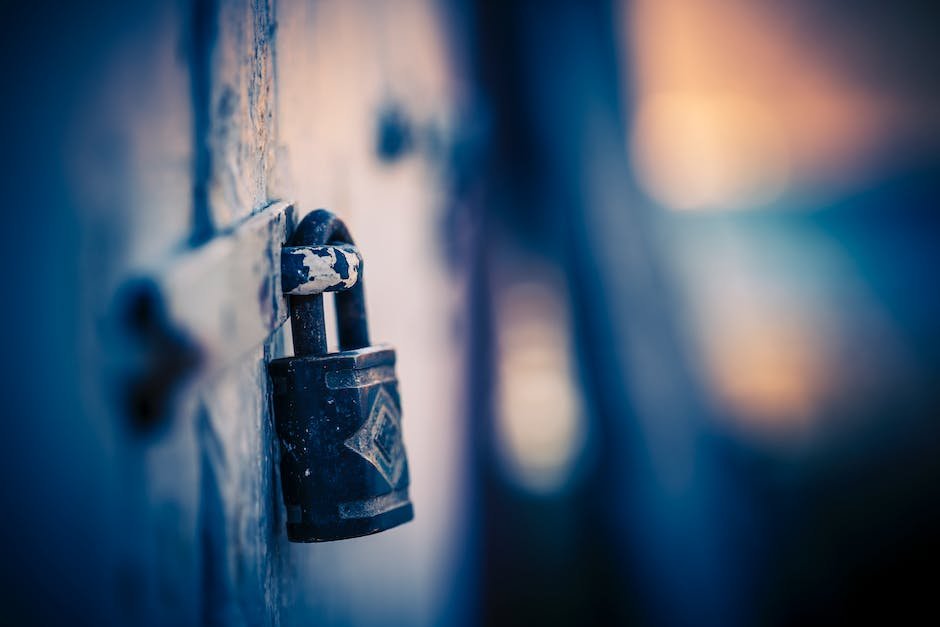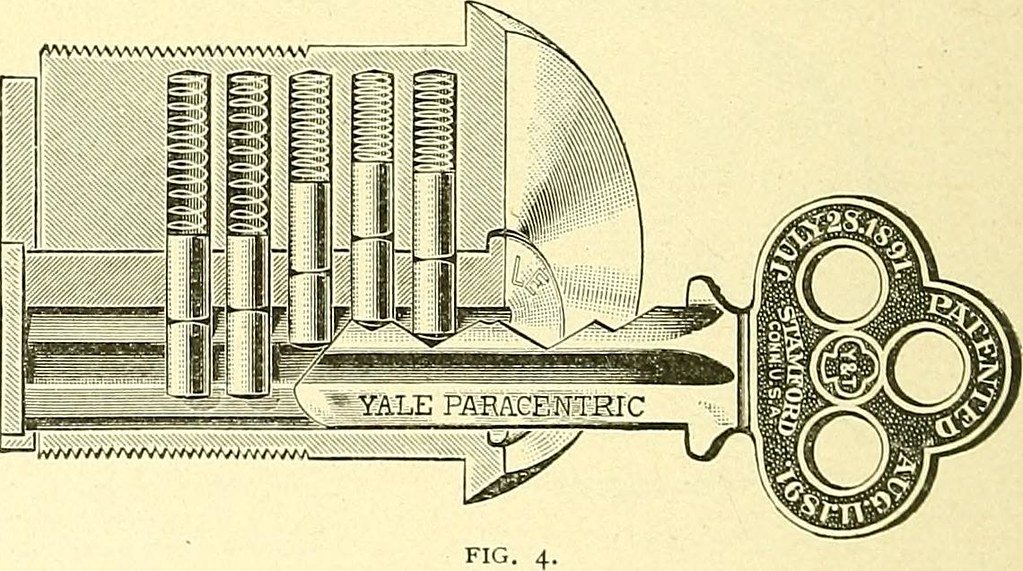Have you ever wondered about the intricate world of locks and the art behind unlocking them? Step into the mind of a locksmith, a magician of sorts, who possesses the uncanny ability to decipher and manipulate the complex mechanisms that guard our possessions and secrets. The science of locksport, an exhilarating blend of physics, engineering, and problem-solving, unveils the enigmatic world of lock mechanics. Hushed whispers of tumblers, shimmery dances of pins, and delicate clicks of springs will guide us on a journey to understand the inner workings of these fascinating contraptions. So, fasten your seatbelts (pun intended) and prepare to delve into the secrets of locks with a curious mind and a passion for exploration!
Table of Contents
- The Anatomy of a Lock: Exploring the Inner Workings and Components
- Understanding Pin Tumbler Locks: How They Function and Why They Are Common
- Mastering Lock Picking Techniques: Tips and Tricks for Success
- Enhancing Lock Security: Expert Recommendations for Effective Lock Mechanisms
- Locksport Ethics and Legal Considerations: Navigating the Fine Line with Responsibility
- Q&A
- Wrapping Up

The Anatomy of a Lock: Exploring the Inner Workings and Components
Locks are fascinating mechanisms that hold an extraordinary level of intricacy within their seemingly simple designs. When we explore their inner workings, we discover a symphony of components working together in perfect harmony.
At the heart of every lock lies the keyway, a small channel that allows the key to enter and engage with the lock’s mechanism. The keyway is often surrounded by a cylinder, which houses the key pins and driver pins. These pins are responsible for keeping the lock secure when not in use. When a correct key is inserted, its unique ridges align the key pins and driver pins, allowing the cylinder to rotate freely.
Moving on, we find the springs, tiny but mighty, positioned between the key pins and driver pins. Springs exert downward pressure, ensuring the pins stay in the correct position when the key is not inserted. Without these springs, the lock would fail to function properly.
Additionally, locks feature a cam or a bolt, which is responsible for the physical actuation of the lock. When the key successfully aligns the pins, it allows the cam or bolt to move, granting access to the locked mechanism it is protecting.
The anatomy of a lock is a testament to the ingenuity and craftsmanship behind these essential security devices. From the intricate interaction of pins within the cylinder to the subtle strength of the springs, each component plays a vital role in safeguarding our possessions and maintaining our peace of mind.
Understanding Pin Tumbler Locks: How They Function and Why They Are Common
Pin tumbler locks are the most widely used type of lock, found in homes, offices, and even vehicles. These locks operate on a simple yet ingenious mechanism that ensures security and ease of use. To understand how pin tumbler locks work, we need to delve into their intricate design.
Function:
A pin tumbler lock consists of five main components:
- Plug: This is the part you insert your key into.
- Driver Pins: These pins sit between the plug and the outer casing of the lock.
- Key Pins: These pins are of various lengths, corresponding to the design of the key.
- Spring: The spring applies pressure to the pins, keeping them in place.
- Cylinder: The cylinder holds everything together.
When you insert the key, the key pins align with the shear line, separating the driver pins from the plug. This allows the plug to rotate, unlocking the lock. In essence, each pin acts as a tiny gatekeeper, preventing unwanted access without the right key.
Commonality:
Pin tumbler locks have gained popularity over the years due to their reliability, effectiveness, and affordability. They offer a balance between security and convenience, making them accessible to a wide range of users. Whether you have a traditional pin tumbler lock or a more advanced variant, understanding their inner workings can help you appreciate their value in safeguarding your belongings.

Mastering Lock Picking Techniques: Tips and Tricks for Success
Tips and Tricks for Mastering Lock Picking Techniques
Lock picking is an art that requires precision, patience, and a deep understanding of the mechanisms at play. Unlocking the secrets of locks can be both an exciting and practical skill to possess. Here are some invaluable tips and tricks to help you become a master of lock picking:
- Choose the right tools: A locksmith is only as good as their tools. Invest in high-quality lock picks and tension wrenches that suit the locks you wish to conquer. Different locks require different tools, so make sure you have a versatile set for various scenarios.
- Study lock mechanisms: Understanding how locks work is paramount to your success. Educate yourself on different lock types, such as pin tumbler locks or wafer locks, and learn the specific techniques to defeat them. This knowledge will provide you with a solid foundation for your lock picking endeavors.
- Practice, practice, practice: Like any skill, lock picking requires practice to master. Start with simple locks and gradually work your way up to more complex ones. Set aside regular practice sessions, experimenting with different techniques and gradually increasing the difficulty level. Remember, patience and persistence are key.
- Master the tension wrench: The tension wrench is the unsung hero of lock picking. This tool applies slight pressure to the lock’s core, creating a binding effect that you can exploit to manipulate the pins. Mastering the delicate art of applying the right amount of tension is crucial for success, so focus on perfecting this fundamental skill.
- Experiment with different techniques: Lock picking is a diverse field with a myriad of techniques at your disposal. From raking and single-pin picking to bumping and shimming, explore different methods to find what works best for you. Each technique has its own nuances, so don’t be afraid to experiment until you find your sweet spot.
Remember, lock picking should only be practiced ethically and within legal boundaries. Always seek proper authorization before attempting to pick a lock and respect the laws of your jurisdiction. As you learn and develop your lock picking skills, exercise responsibility and use your newfound knowledge for positive purposes.
Enhancing Lock Security: Expert Recommendations for Effective Lock Mechanisms
Lock security is a top priority for homeowners, businesses, and anyone looking to protect their valuables. To enhance lock security, experts recommend incorporating effective lock mechanisms that provide an extra layer of protection. Here are some expert recommendations to consider:
1. Install Deadbolts: Deadbolts are considered one of the most reliable locks for residential and commercial properties. They offer enhanced security by extending deep into the door frame, making it difficult for intruders to force their way in. Ensure the deadbolt you choose is of high-quality, heavyweight, and comes with anti-saw pins for added protection.
2. Upgrade to High-Security Locks: For optimal security, consider upgrading your standard locks to high-security locks. These locks are designed with advanced features like pick-resistant cylinders, reinforced strike plates, and restricted keyways. With their unique key designs and complex internal mechanisms, high-security locks provide an extra level of resistance against unauthorized entry.
3. Implement Access Control Systems: For businesses or properties with multiple entrances, access control systems are an excellent choice. These systems allow you to restrict access to certain areas and provide a detailed log of entry and exit times. Options range from traditional keypad entry systems to biometric scanners, depending on your specific security requirements.
Remember, it’s important to consult with a professional locksmith to assess your individual security needs and to ensure proper installation. By incorporating these expert recommendations into your lock security strategy, you can enjoy peace of mind knowing that your property is well-protected.
Locksport Ethics and Legal Considerations: Navigating the Fine Line with Responsibility
Locksport is an exciting and inherently fascinating hobby that involves the study and practice of picking locks. However, it is essential to approach this hobby with a strong sense of ethics and a thorough understanding of the legal considerations involved. Navigating the fine line between responsible locksport and potential legal consequences requires a responsible and conscientious approach.
When engaging in locksport, it is crucial to always respect the boundaries set by the law. Lock picking should only be practiced on locks that you own or have explicit permission to tamper with. It is important to remember that locksport is not about engaging in any illicit activities or harm. Instead, it is an opportunity to explore the intricate mechanics and principles that underlie the security devices we encounter in our daily lives.
As locksport enthusiasts, we should strive to promote a positive image for our community by adhering to a strict code of ethics. This includes never using our skills for illegal purposes, such as breaking into other people’s property or compromising security systems without authorization. Ethical locksport practitioners also prioritize education and collaboration, sharing knowledge and techniques openly within the community while respecting the rights and privacy of others.
- Always obtain proper authorization: Before attempting to pick a lock, ensure that you have explicit permission to do so.
- Respect the law: Familiarize yourself with the legal restrictions and regulations regarding locksport in your jurisdiction.
- Emphasize education and responsibility: Connect with other locksport enthusiasts to share knowledge, techniques, and promote responsible practice.
- Openness and transparency: Clearly communicate your intentions and intentions of the locksport community to non-enthusiasts, emphasizing that locksport is a legitimate hobby focused on understanding and improving security.
By upholding these ethics and legal considerations, locksport enthusiasts can continue to pursue their passion responsibly, while also fostering a positive and insightful locksport community.
Q&A
What is locksport?
Locksport is a recreational activity and a community of enthusiasts who enjoy the art and science of picking locks. It involves studying and understanding the mechanics of various locking mechanisms to gain access to them without using the traditional keys.
Are lockpicking skills legal?
In most countries, lockpicking is legal as long as it is practiced responsibly and within the boundaries of the law. Locksport practitioners often emphasize the importance of ethical use of their skills and promote the security of locks and the improvement of locksmithing techniques.
What is the purpose of locksport?
The primary purpose of locksport is to educate and raise awareness about the vulnerabilities and strengths of different lock systems. It serves as a platform for enthusiasts to improve their lockpicking skills, aiding the development of more secure locks and mechanisms.
How do locks work?
Locks operate on the principle of employing a series of pins, which need to be aligned properly in order to rotate the lock cylinder and unlock it. The correct arrangement of pins is determined by the unique grooves and ridges found on a key.
What are some common types of locks?
There are various types of locks, including pin tumbler locks, wafer locks, disc-detainer locks, and dimple locks. Each lock type has its own unique characteristics and mechanisms, providing a different level of security.
Can any lock be picked?
While no lock is entirely pick-proof, some locks are designed to be extremely difficult to pick. High-security locks, such as those used in banks or government facilities, often feature additional security measures to resist picking attempts.
Is locksport only about lockpicking?
No, locksport also involves other aspects such as lock design, key impressioning, and even safe cracking. It encompasses a wide range of skills and knowledge related to locks and security systems.
Are there any ethical concerns with locksport?
Ethical concerns may arise if lockpicking skills are used for illegal activities, such as breaking and entering. However, the locksport community strongly condemns such actions and promotes responsible use of lockpicking skills for educational purposes only.
Can locksport help improve lock security?
Absolutely! Through the examination of lock vulnerabilities, locksport enthusiasts can provide valuable feedback to manufacturers, aiding in the development and improvement of more secure locks and systems, thus benefiting society as a whole.
Is locksport for everyone?
Locksport is open to anyone with an interest in locks and security systems. Enthusiasts range from hobbyists and locksmiths to engineers and computer scientists. However, it is essential to respect local laws and regulations before engaging in any locksport activities.
Wrapping Up
Unlocking the Enigma: Unveiling the Mysteries of Lock Mechanics
As we reach the end of our journey into the captivating world of Locksport, we find ourselves standing on the precipice of true understanding. We have delved deep into the intricate mechanisms that safeguard our most prized possessions, unraveling the enigmatic world of lock mechanics with insatiable curiosity. Through the lens of science, we have witnessed the birth and blossoming of a subject that elevates the art of locksmithing to new heights.
Venturing beyond the realm of simple metal contraptions, we have discovered that locks are not mere gatekeepers, but complex tapestries woven from the threads of physics and mechanics. Each pin, every cylinder, and all those mysterious wards are synchronized dancers performing an intricate ballet, hidden within a humble key and lock. The precise interaction of levers, springs, and tumblers is a pas de deux, an intertwining of forces that resists unauthorized access and preserves our security.
With an artist’s eye, we have examined the inner workings of these guardians, peering into the secret chambers where precision and accuracy reign supreme. By embracing the science of Locksport, we unlock a new understanding of the delicate balance between security and vulnerability. It is a symphony playing out right before our eyes, as we slowly unravel the intricacies of lock mechanisms and ponder the craftsmanship behind their creation.
But let us not forget that our newfound knowledge comes with great responsibility. The power to unlock these puzzles should be wielded with utmost care, for the protection of others’ property and the preservation of privacy. It is the fine line between exploration and exploitation, a call to honor ethical practices and ensure that our pursuit remains virtuous.
Our journey into the science of Locksport may have ended, but its legacy will forever shape our perception of locks and the boundless potential they hold. As the curtain falls on this inquisitive voyage, we stand in awe of the craftsmanship and engineering that transforms the mundane into extraordinary. With our minds replete with knowledge and our senses tingling, we emerge from the depths of lock mechanics enlightened, ready to appreciate the beauty embedded in the everyday objects that safeguard our world.
May our understanding of lock mechanics be a testament to the ceaseless pursuit of knowledge, humility, and curiosity. And as we navigate the labyrinth of our own lives, let us remember that the roots of science can burrow deep into even the most unassuming places, revealing a world of wonder and opportunity to those daring enough to explore it.
As an affiliate, my content may feature links to products I personally use and recommend. By taking action, like subscribing or making a purchase, you’ll be supporting my work and fueling my taco cravings at the same time. Win-win, right?
Want to read more? Check out our Affiliate Disclosure page.